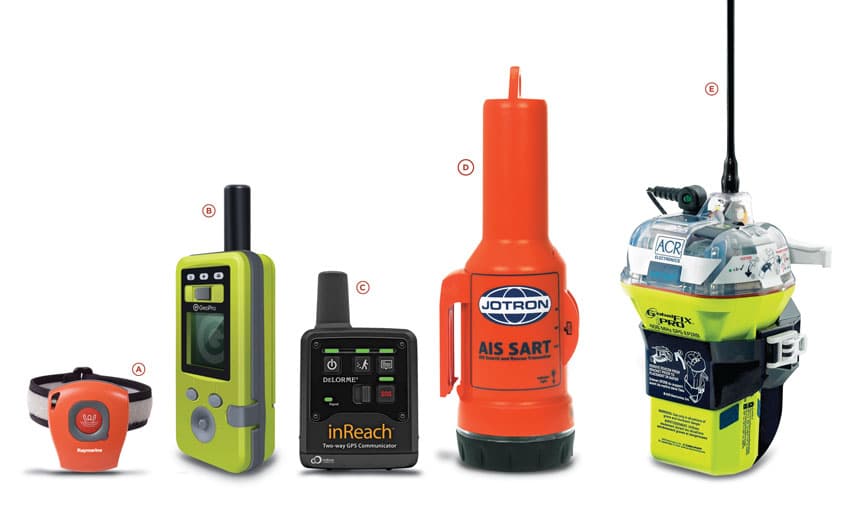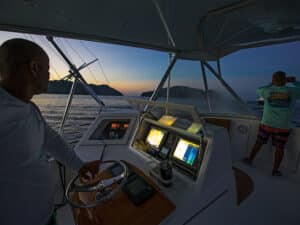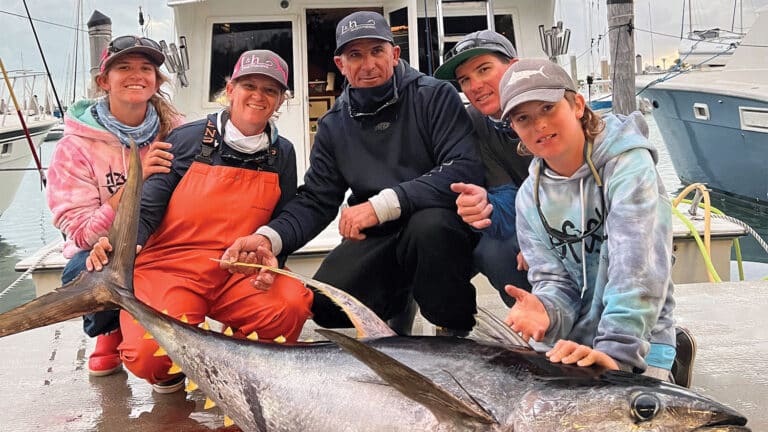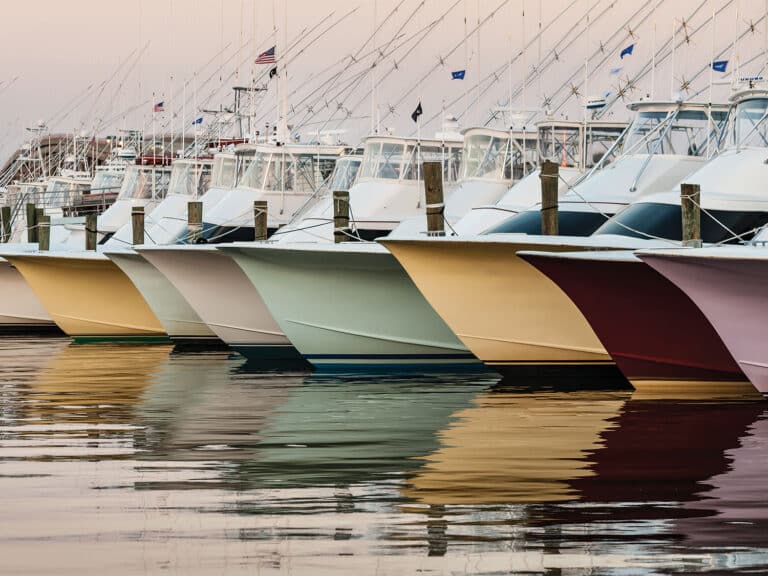
safety electronics
Virtually all of us say that safety comes first on our boat. And when J-hooks were the norm, almost all of us said that we wouldn’t let a white marlin eat long enough for it to be gut-hooked. But we all know that stretching the five-count to a 10 resulted in more tight lines, and often we’d wait, wait and wait some more before slamming the hook home. The twinge of regret when we saw the white spit blood was minor compared to the adrenaline rush we felt when billing the fish, and even though we silently promised not to wait so long the next time, well, you know.
Unfortunately, most of us act the same way when it comes to safety. Sure, we want to put safety first, and have every intention of doing so, but when the rubber meets the road, convenience, expense and time considerations interfere, robbing us of our good intentions. Are you ready to walk the walk instead of just talking the talk? Then check out these safety devices that can make a difference in an offshore emergency; some are fairly new and others are simply underutilized.
LifeTags
Although it’s been around for a few years, Raymarine’s LifeTag (A, above) system still represents one of the best man-overboard emergency devices ever invented. Yet seeing it in use is as rare as catching a spearfish off the Jersey coast.
The LifeTag system consists of a base station and small, light (1½-ounce) pendants worn by the crew. Each pendant constantly broadcasts to the base station, and if someone goes overboard, the broadcast is interrupted and the base station shouts out an alarm. If your navigation system is SeaTalk-compatible, it can also set some basic responses in motion, like triggering the network MOB alarm, recording the position on the GPS (and on all SeaTalk-networked devices), and reducing range scales on the chart plotter and radar to make it easier to see the waypoint and the MOB.
The pendants also come with a manual trigger that allows a crewman to sound the alarm if he discovers a fire, flooding or any other emergency situation that requires immediate assistance. The pendants offer a 2,000-hour-plus operating life with off-the-shelf CR2 three-volt lithium power cells, and you monitor up to 16 crewmen from a single base station. But the usual radius of operation is about 30 feet, so boats that are over 60 feet may need to install a pair of base stations to cover the entire vessel. For more information, visit raymarine.com.
**
Satellite Messengers**
Standard satellite messengers evolved fairly quickly into a common safety feature in the marine world, but up until recent years they came with some significant weaknesses. They only offered a one-way communication device, and couldn’t provide you with any indication that your emergency calls for help had been heard. The GeoPro Messenger (B) ends that one-way conversation and lets you know you’ve been heard via a 160-character messaging system. Although this little (5″ x 2½” x 1½,” 13.4-ounce) unit was designed more for commercial than recreational use, its safety applications for boaters are awesome. Not only does it allow you to send and receive 160-character messages, it also has a dedicated emergency distress button. Since you can continue communicating, you know for sure that your messages have been received. Find out more at gmpcs-us.com.
DeLorme introduced a two-way messenger of its own. Tagged the inReach (C), it operates either as a stand-alone unit or paired with the DeLorme Earthmate PN-60w or an Android smartphone. On its own, the inReach sends SOS messages, tracking locations and/or up to three pre-programmed messages. Paired with the Earthmate or your cell, you’ll be able to type and send messages up to 160 characters via email or SMS text. And for those of you who have to give a shout-out to the world every time you bill a fish, it does the Twitter and Facebook things too. There’s more info at delorme.com.
AIS SART
Unlike the traditional SART (search-and-rescue transmitter) units that create a series of blips on a radar screen to guide rescuers to a life raft location, the AIS-equipped SARTs spit out AIS data — so the SAR team knows your exact location, as well as other important information like the speed and set of your drift. Added safety bonus: Any ship or boat with an AIS receiver also gets your signal.
In 2010, exactEarth (an AIS global vessel-tracking and data service company) conducted a trial with five different AIS SARTs. They deployed units both in the water and on boats, and found that all five were detected via satellite.
AIS SART units just began receiving FCC approval in the past few years or so, and IMO approval came in January 2010. They are currently being built by Kannad (kannadmarine.com), Jotron (jotron.com) (D) and McMurdo (mcmurdolimited.com). The units come in life-raft-size and smaller, pint-size personal versions. AIS SART is a good idea with a lot of potential — stay tuned for even more availability in the near future.
GPIRBs
The proper name for these units (GPS-enhanced emergency position indicating radio beacons, or GPS-enhanced EPIRBs) is a mouthful, but I’ll bet you can infer from the moniker exactly what these units do. Yes, you’re right. They combine a GPS with an EPIRB to provide an accurate position in 50 to 120 seconds. Having that location in hand, as opposed to using the usual satellite Doppler shift that EPIRBs depend on, can save search-and-rescue personnel between 30 and 100 minutes determining your position. That may not sound like a lot of time, but when your boat has sunk out from under you, it can mean the difference between life and death. Just this past May, the Coast Guard issued a marine safety advisory, recommending the replacement of older EPIRBs with new GPIRBs. The units are available from a number of companies, including ACR (E) (GlobalFix units, acrelectronics.com), Kannad (SafeLink; choose carefully, because there are SafeLink versions with and without GPS), McMurdo (Smartfind Plus G5) and Ocean Signal (SafeSea E100G, oceansignal.com).
**More Spot
**SPOT has also expanded its messenger capabilities with the Connect — but we’ve covered this one before, so we’ll keep it short and sweet. This unit grabs a satellite and uses Bluetooth to communicate with your cell phone, and then acts as a (limited) data link between the two. That means you can text on your phone via satellite, regardless of your location. The Connect is small, light and inexpensive. Learn more at findmespot.com.







